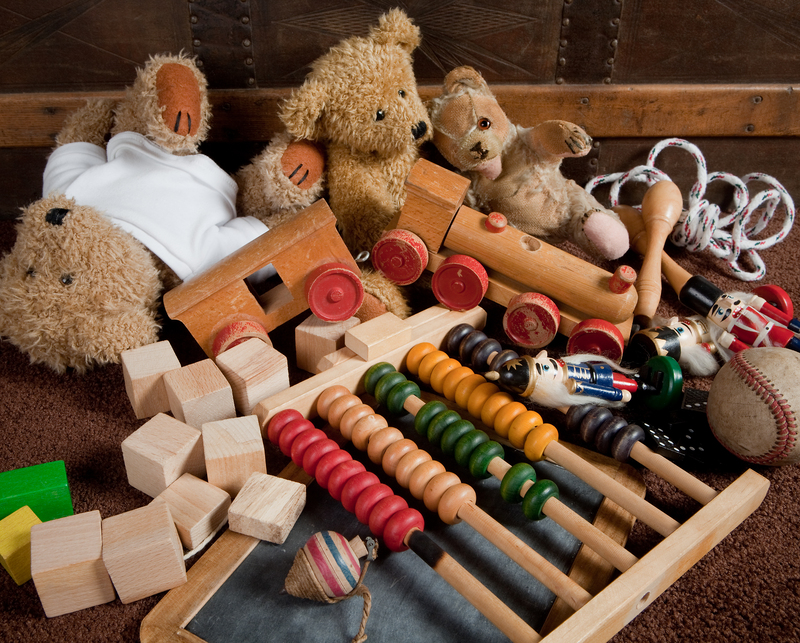Understanding the Risks of DIY Piano Moving: Expert Insights
Posted on 29/05/2025
Understanding the Risks of DIY Piano Moving: Expert Insights
Moving a piano is a challenging task that requires careful planning, specialized equipment, and a deep understanding of the instrument's unique structure. While the thought of saving money on professional movers might be tempting, attempting to move a piano yourself carries significant risks. In this comprehensive guide, we will explore the hazards of do-it-yourself piano moving, provide insights from industry experts, and offer alternatives to ensure your precious instrument remains safe and sound.

Why Moving a Piano is Inherently Risky
Pianos are not only heavy and cumbersome, but they are also intricate instruments with hundreds of moving parts. The average upright or grand piano can weigh anywhere from 300 to over 1,200 pounds. This weight, combined with awkward shapes and delicate interiors, makes them especially susceptible to damage during a move. Here's why moving a piano yourself can be so hazardous:
- Weight and Size: Pianos are among the heaviest household items, making them difficult to maneuver without proper technique.
- Delicate Mechanisms: The inner workings--strings, hammers, soundboard--can be irreparably damaged by improper handling.
- Structural Vulnerability: Even minor bumps can affect the furniture finish and structural integrity.
- Physical Injury: DIY movers risk serious injury to themselves, from back strains to severe accidents.
The Most Common DIY Piano Moving Mistakes
Expert movers frequently encounter the aftermath of incorrect DIY attempts. Below are some of the most common pitfalls homeowners face when forgoing the help of professionals:
- Underestimating the piano's weight and size
- Using improper or household tools in place of specialized moving equipment
- Not securing the piano during transport, leading to internal or external damage
- Neglecting to properly disassemble or pad the instrument
- Attempting to navigate tight corners, stairs, or uneven terrain without a detailed plan
Types of Pianos and Their Unique Moving Challenges
There are several types of pianos, each presenting its own logistics issues. Understanding these differences is crucial when assessing the risks of DIY piano transport:
- Upright Pianos: While somewhat easier to maneuver due to their compact nature, upright pianos still weigh over 300 pounds. They are top-heavy, making them prone to tipping and damage during moves.
- Baby Grand and Grand Pianos: These instruments can weigh up to 1,200 pounds. Their large curved sides, fragile legs, and oversized lids require specialized disassembly and careful handling.
- Digital Pianos: Though generally lighter, the risk to expensive internal electronics is high if the instrument is dropped or jostled.
Physical Risks for the Mover
Attempting a DIY piano move can lead to severe personal injury. Pianos are not only heavy--they are also unbalanced, making them challenging to navigate through doorways, stairs, or narrow hallways. Here's why DIY movers are especially vulnerable:
- Back Injuries: Lifting and carrying an object as heavy as a piano can cause serious damage to your back, especially without proper posture or technique.
- Crushed Fingers and Toes: Mishandling can result in fingers or toes being trapped beneath the instrument.
- Strains and Sprains: Sudden shifts in weight distribution often lead to muscle strains or twisted joints.
- Slips and Falls: Moving individually or with inexperienced helpers increases the risk of slip-related accidents.
- Serious Trauma: In extreme scenarios, dropping a piano can cause major traumatic injuries, including broken bones or head injuries.
The Financial Risks of DIY Piano Moving
While saving money may seem like an obvious advantage, the financial consequences of a do-it-yourself piano move gone wrong can be steep:
- Damage to the Piano: Repairing a damaged piano can cost hundreds or thousands of dollars. In some cases, the damage may be beyond repair.
- Repairing Home Damage: Walls, stairs, floors, and door frames often suffer collateral damage during amateur moves, triggering costly repairs.
- Medical Expenses: Injuries can lead to medical bills, missed work, or long-term rehabilitation costs.
- Loss of Insurance Coverage: Most home insurance policies will not cover damage resulting from self-moves, leaving you fully liable.
Expert Insights: What the Professionals Say
Leading piano movers and industry professionals consistently warn against DIY relocation efforts. Here are some insights from experts in the field:
- Proper Training is Essential: "Moving a piano requires specialized training to ensure both the safety of the movers and the instrument," says Jane Carter, owner of Carter Piano Movers.
- Equipment Makes the Difference: According to Rick Farley, a certified piano technician, "Professional movers use heavy-duty dollies, moving straps, ramps, and protective padding to safely secure the piano during the entire process."
- Insurance and Liability: "If something goes wrong, professionals are fully insured. Homeowners moving their own pianos are often left paying for damages out of pocket," highlights Marcus Grant of Safe Hands Piano Moving.
- One Small Mistake Can Be Catastrophic: "A slip, even for a second, can lead to irreversible damage. The cost of hiring a pro is small compared to replacing a beloved heirloom," adds Emily Cho, a piano teacher and moving consultant.
Specialized Methods and Equipment Used by Professional Piano Movers
Professional piano movers utilize tools and methods specifically designed for handling pianos. These include:
- Custom Dollies and Skid Boards: These distribute the weight of the piano and allow maneuvering over various terrains.
- Heavy-Duty Straps: Secure the piano to dollies, preventing shifting during movement and transport.
- Disassembly Services: Legs, pedals, or even lids are often removed to minimize stress on sensitive parts.
- Professional Padding and Blankets: These materials protect both the piano and your home interiors from scratches and dents.
- Ramps and Hoisting Systems: Essential for safely navigating stairs or loading the piano into moving vehicles.
Why Professional Expertise Matters
Piano movers understand the center of gravity and balance points of different models. Their experience minimizes the risk of dropping a piano or striking door frames, walls, or floors. They also know how to properly reassemble and recalibrate the instrument after the move, which can be crucial for its sound quality.
Risks to the Piano's Lifespan and Sound Quality
Improper moving can affect a piano's performance for years to come. Risks include:
- Soundboard Cracks: The slightest impact or stress can cause cracks in the soundboard, fundamentally altering the tone.
- Warped Frames: Tipping or twisting the frame can make it impossible to ever get the piano in tune again.
- String Breakage: Sudden jolts during a move can snap delicate strings or damage internal mechanisms.
- Unseen Damage: Even if the exterior appears undamaged, internal problems may develop later, affecting playability and value.
Environmental Challenges: Stairs, Elevators, and Weather
Pianos are especially challenging to move in the following scenarios:
- Stairs: Moving an upright or grand piano up or down stairs dramatically increases risk, even with several helpers.
- Small Doorways and Tight Corners: Pianos often don't fit through standard openings without tipping or partial disassembly.
- Elevators: Finding an elevator large enough, or getting clearance from a building manager, involves advance planning.
- Weather Conditions: Moisture, rain, or snow can damage the piano's finish and internal parts. Temperature shifts may also cause tuning instability.
Real-World Consequences: Common DIY Disasters
Internet forums and moving companies are filled with stories of DIY piano moves gone wrong, such as:
- Piano wrenched out of a back door, permanently warping the frame.
- Instrument dropped on stairs, smashing keys and cracking the case.
- Damage to walls and flooring after improper padding and maneuvering.
- Moving a grand piano in the rain--water damage rendered it unplayable.

Alternatives to DIY Piano Moving
Given the multiple risks, the best way to move a piano safely is to rely on expert assistance. Here are alternatives to consider:
- Hire a Professional Piano Moving Company: These specialists possess the knowledge, insurance, and equipment necessary for a secure move.
- Consult with Piano Technicians: If you must move the piano yourself (within the home), speak with a technician to learn what can safely be disassembled or moved.
- Rent Professional Equipment: If professional movers aren't available, at least use industry-grade dollies and padding.
- Move Only When Necessary: Consider if moving the piano is truly essential. Sometimes it may be safer to leave it in place or sell and replace.
How to Pick the Right Piano Movers
When choosing a professional company, ensure that:
- They are insured for both property and injury damages
- Their movers have extensive experience with your specific piano model
- They use professional equipment and techniques
- They provide detailed quotes and clear service agreements
Final Thoughts: Leave Piano Moving to the Experts
While performing a piano move yourself may initially seem like a cost-effective choice, the reality presents overwhelming risks. Between potential physical injuries, astronomical repair bills, and the irreplaceability of valuable instruments, the dangers of moving a piano without professional help far outweigh any perceived savings.
By engaging a qualified, experienced piano moving company, you safeguard your health, your home, and the treasured sounds of your piano for generations to come. For ultimate peace of mind and to preserve the instrument's lifespan and sound quality, always trust the experts with your piano relocation needs.
Summary Checklist: What to Remember About DIY Piano Moving Risks
- Pianos are extremely heavy and delicate instruments--damage can be costly or irreversible.
- DIY piano moves put you at risk of injury and costly property damage.
- Specialized equipment and trained personnel are essential for safe moving.
- Professional movers offer insurance and peace of mind.
- Your piano's value, both sentimental and financial, deserves expert handling.
For more detailed guidance or to arrange a safe, professional piano move, always consult with certified moving specialists in your area.

